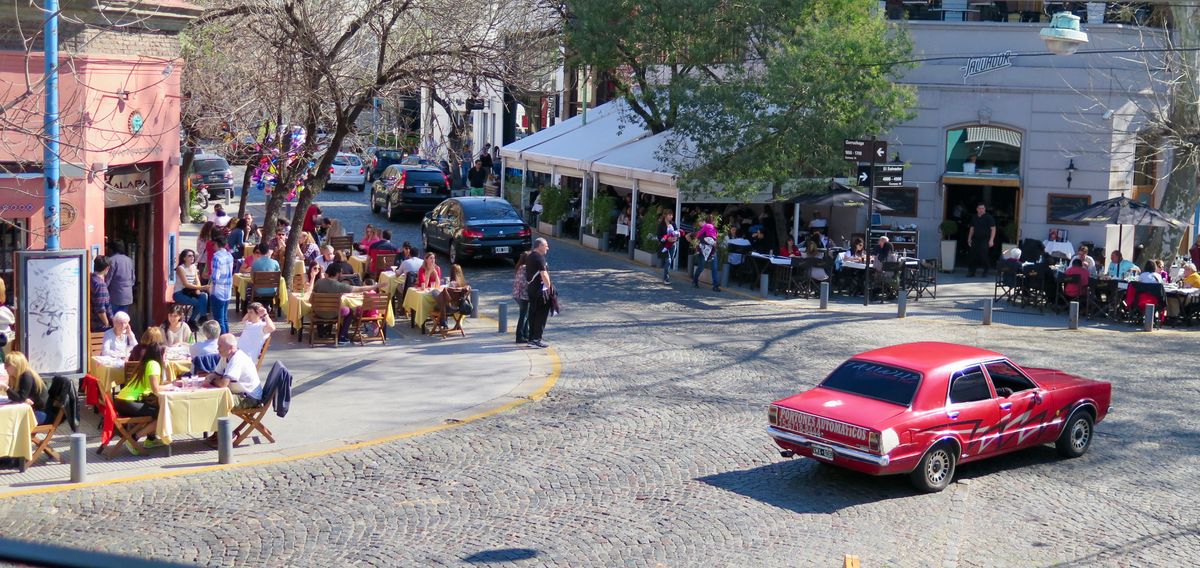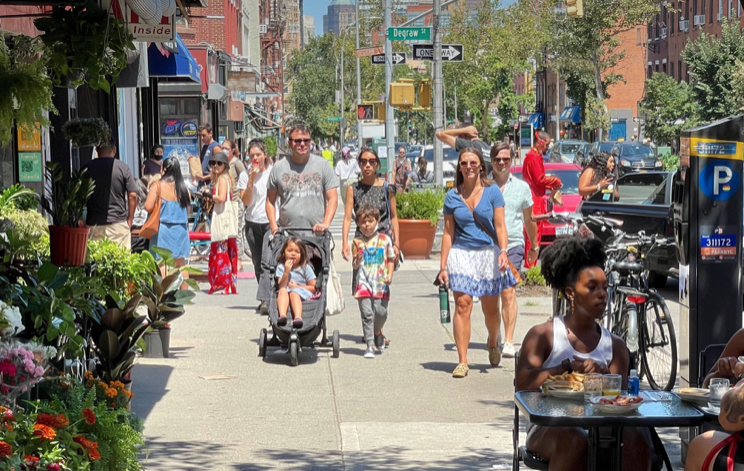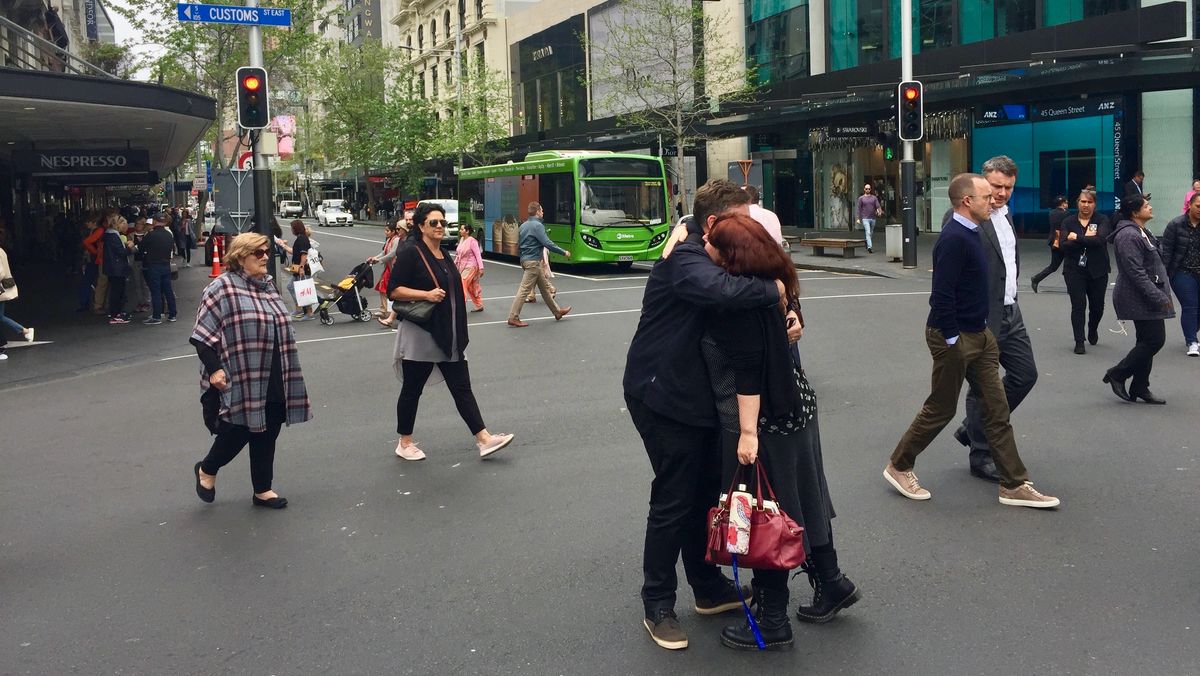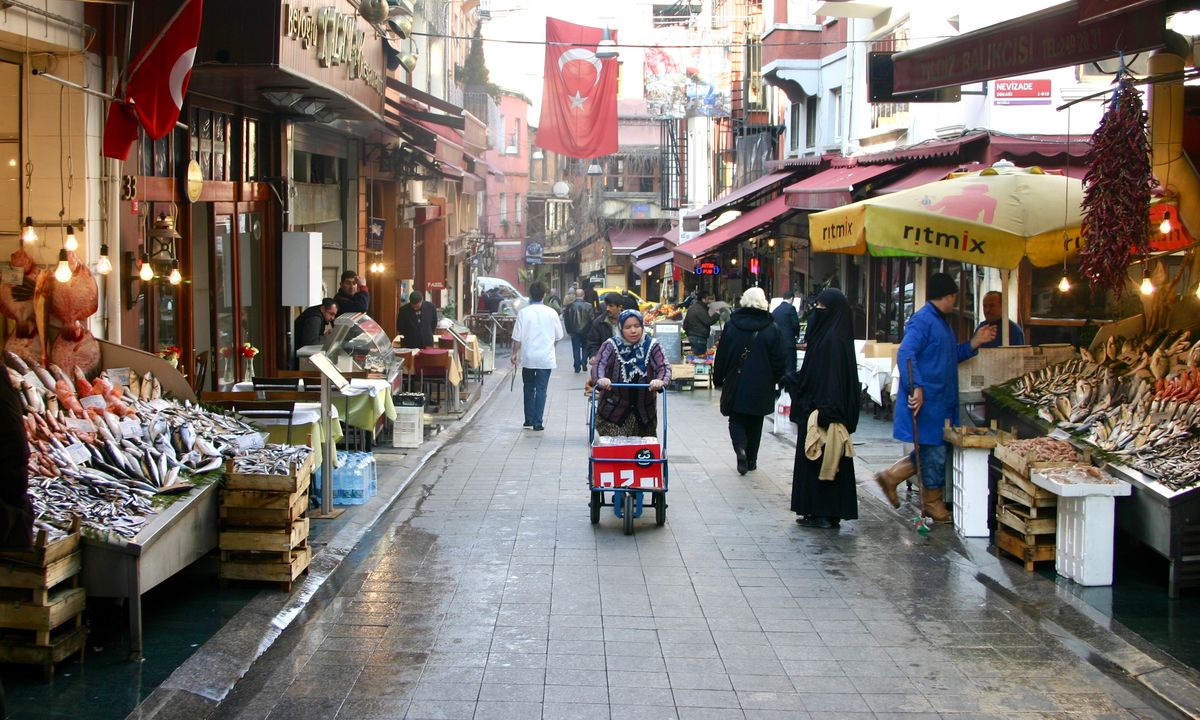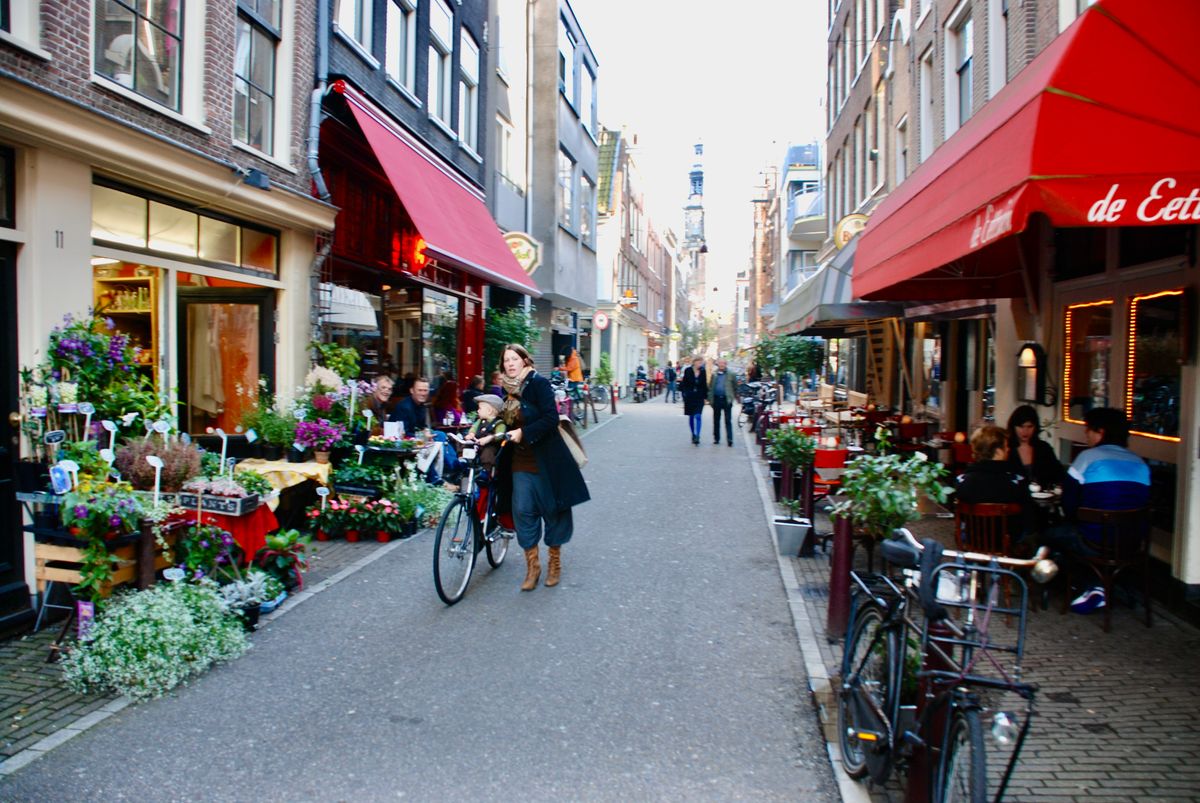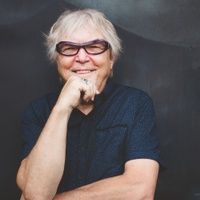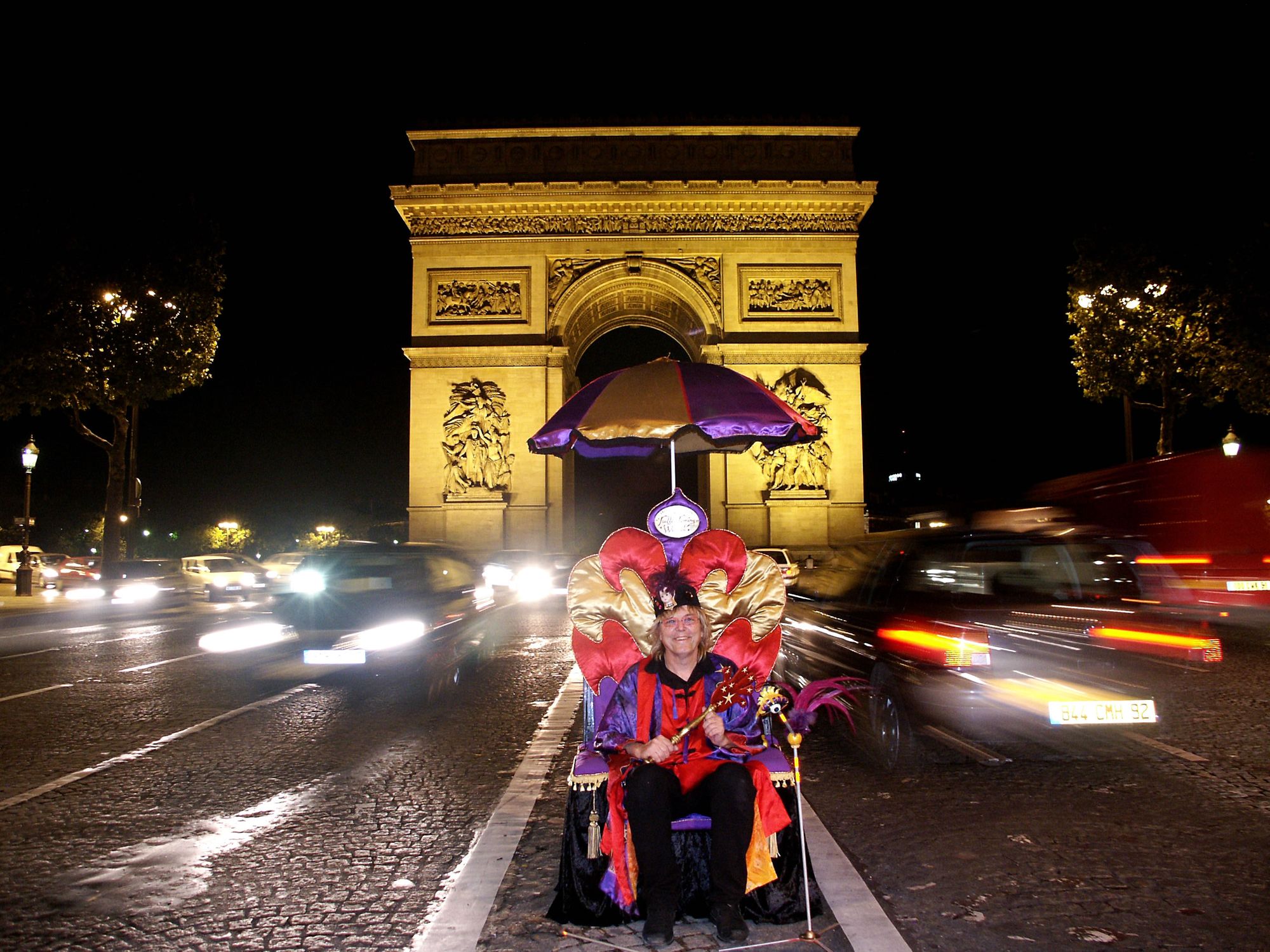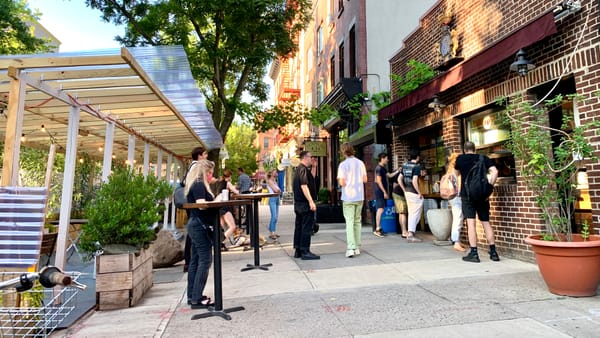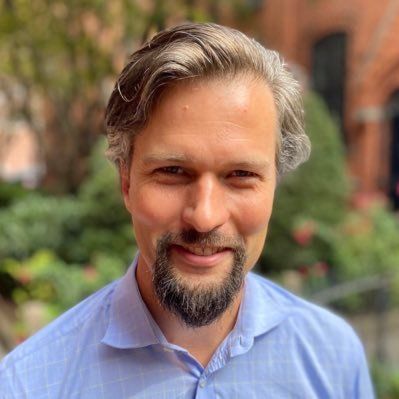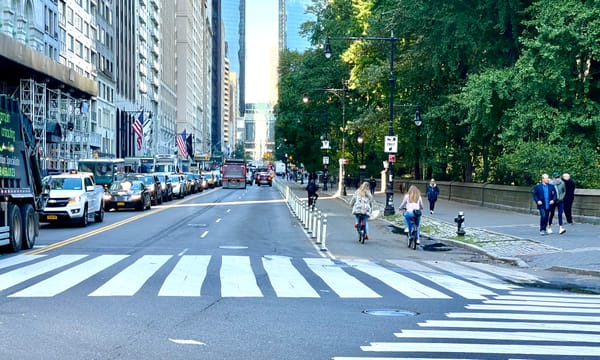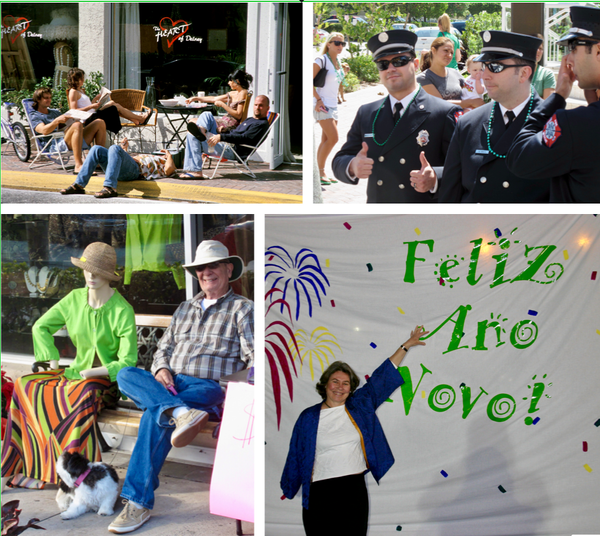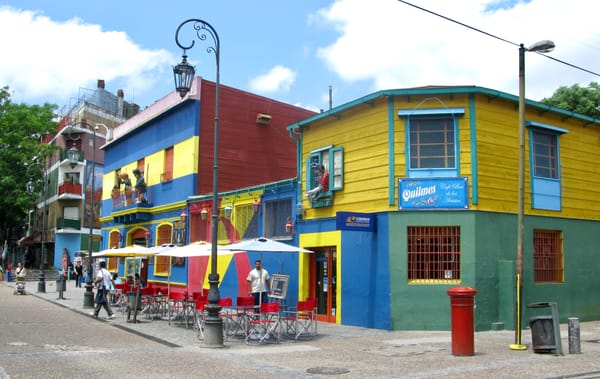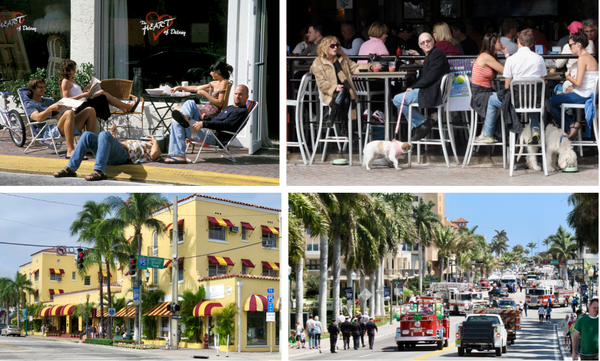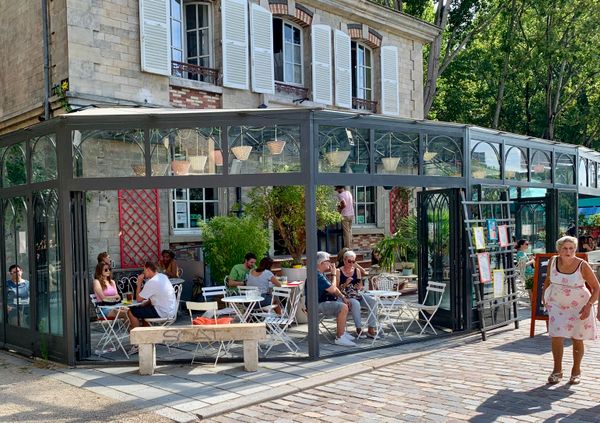David Engwicht's Revolutionary Approach to Reclaiming Our Communities
David has always been an inspiration to us. He has once again challenged us to our core with a new thought piece...Are Placemakers the High-Priests of a New Religion?
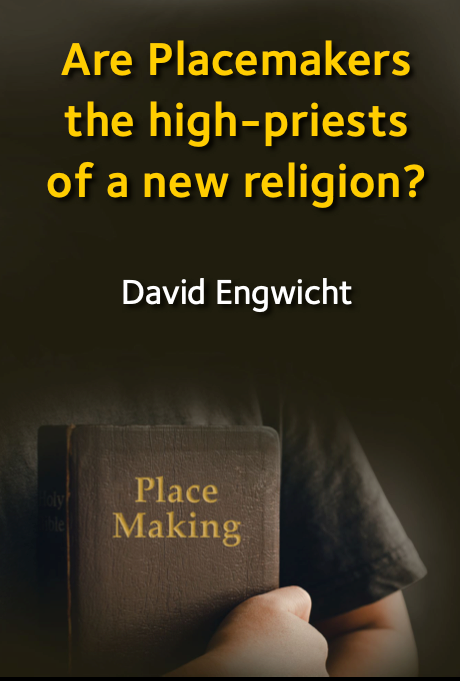
David has always had a special place on our list. But as you can see he is in another dimension that has always been a discovery process as the basis of his work is in the real world figuing out what to do as he goes along.
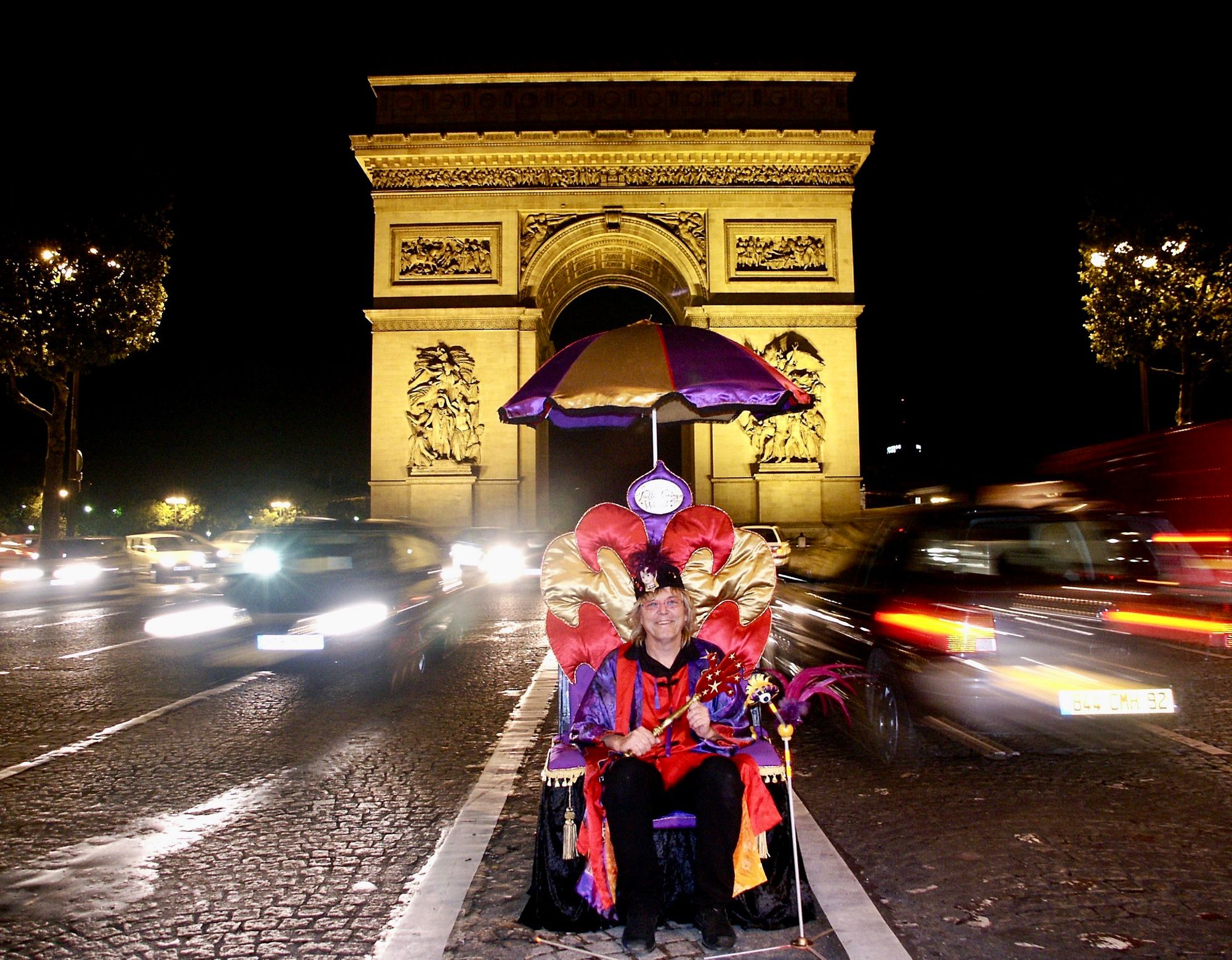
In 1987 my life changed forever when, by pure chance, I attended a public meeting about a proposed road widening through my neighbourhood. I suggested we set up a protest group and, for my trouble, was elected to the committee.
I was a high-school drop-out, washing windows for a living. Over the next year, I delved deeply into the world of urban design and traffic, talking to experts around the world and reading the classics. I also spent a lot of time talking to older people about what life was like before cars took over neighbourhood streets.
In 1989, I wrote a little booklet, Traffic Calming, which became an underground sensation in Australia and the USA. It advocated a wholistic approach to reducing the impacts of traffic—including the use of physical devices such as speed bumps to slow traffic. Unfortunately, this was the only part of the booklet that made much of an impact on public officials.
Deeply disappointed with the narrow interpretation of Traffic Calming, I set out to set the record straight in a follow up book, Towards an Ecocity: Calming the Traffic (published in North America as Reclaiming Our Towns and Cities). This book contained two breakthrough concepts, although I didn’t know it at the time.
Firstly, I argued that cities were “an invention to maximise exchange and minimise travel”. The role of transport in cities is not to move people and freight, but to deliver exchanges—both planned and spontaneous. A lot of the spontaneous exchanges we once got for free—such as kids playing in the street—we are now forced to access through planned activities, like driving children to organised sports events. This concept changed the way transport planning was done in several cities, including Edinburgh, Scotland.
Secondly, I proposed a lot of potential “solutions”. One was the Walking School Bus, which went on to become a world-wide phenomenon.
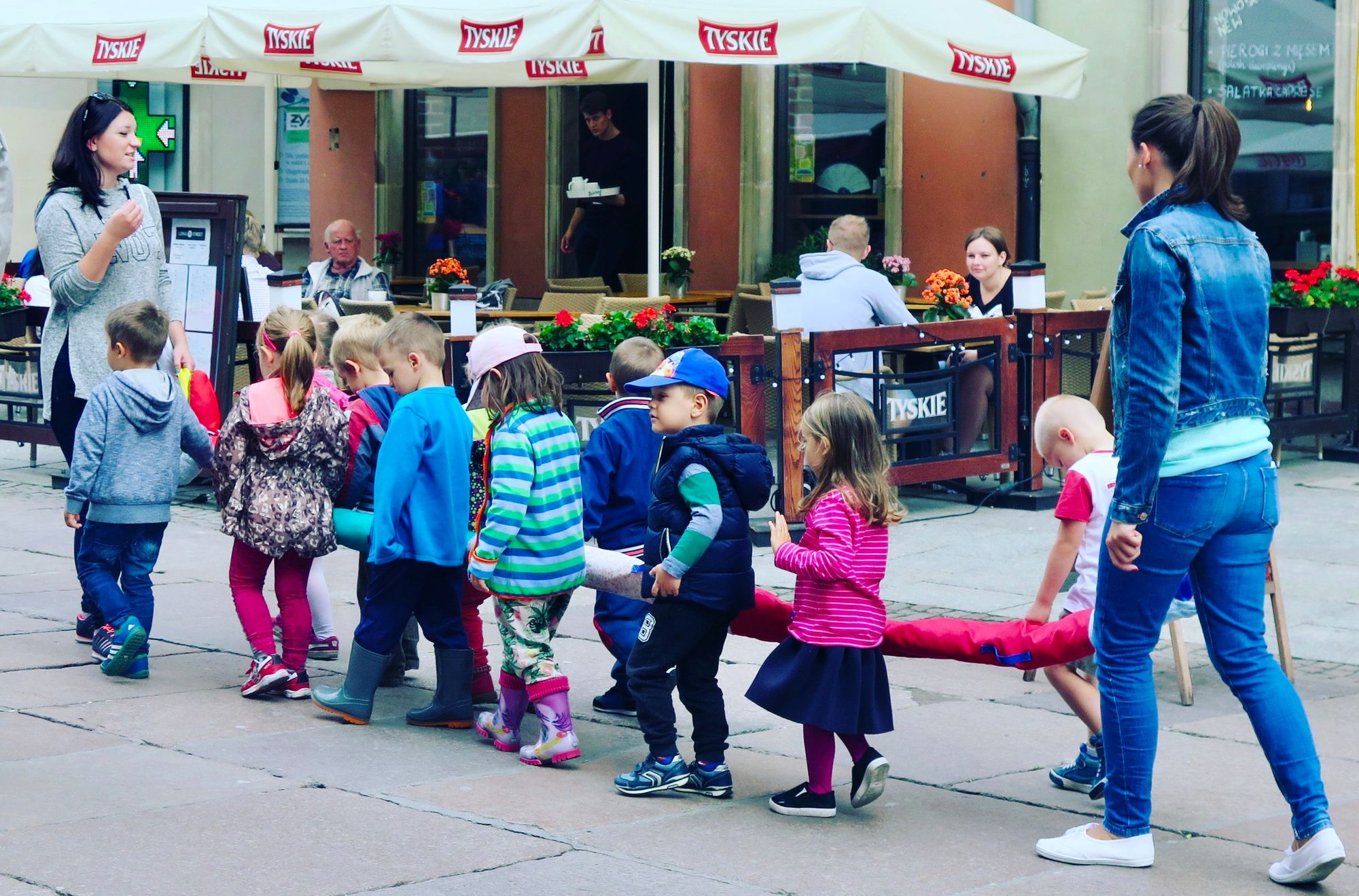
That changed the focus of my work, which led to an accidental discovery, which revolutionized my thinking. I was working on a Traffic Calming scheme for a street in Brisbane, Australia, where I live. I still firmly believed that to slow drivers, we had to change the geometry of the street. But during the planning process, we had a street party, after which residents noticed that traffic began to travel slower even without any traffic calming measures installed . As I delved into why the traffic was going slower, I had an a-ha moment: the speed of traffic on residential streets is governed by the degree of psychological retreat by the people who live there. The reason the traffic was going slower is that the party had sparked increased social activity along the street.
That inspired me to begin a series of “Street Reclaiming” experiments in neighbourhoods all over the world. I would observe the ways residents had retreated, and encourage them to re-engage with their streets by doing things like drawing on the pavement in chalk, moving chairs to the front yard or installing eye-catching displays. Then I would watch the speed of the traffic plummet.
My next two books Street Reclaiming and Mental Speed Bumps: The Smarter Way to Tame Traffic shared what I was learning. Around 2005, I met Dutch traffic engineer Hans Monderman, the father of Shared Space in Europe. He had made the same accidental discovery as me, only years earlier.
Ever since then I have been fascinated about how the design of the public realm impacts the quality of social, cultural and civic life. I started noticing, for instance, how the design or placement of seating in public spaces changes people’s frame of mind—or the subtle message conveyed by bolting that seat down.
In 2009 I began running workshops on the art of placemaking, in particular, how to revitalise the main shopping streets of towns and cities. As a result, I was approached by a Council in New Zealand to create a town-centre masterplan for a village. I asked what the budget was and they said $50,000. I asked if this was my fee and they said yes. I asked how much they had for implementation and they replied, “Nothing yet. We won’t know how much we need until you’ve done the study.” It struck me that, while this was common practice in local government, commissioning a study without having an implementation budget was bizarre—like commissioning an architect to design you a house without any budget in mind.
In the majority of cases, local government never finds the money to fund the pipe dream in the report. So I replied, “I refuse to engage this community in generating ideas when I know there is little chance that any of them will be implemented. Let’s do a brave experiment. I will take $5,000 as my fee, and we will put the other $45,000 in the middle of a table and I will run a workshop to help the community find the most creative way of using that money to improve their village centre.”
Soon after this experience, I was asked by Paihia, another town in New Zealand, to help with a masterplan. I said, “Only if there is some money for implementation on the table”. They raised $5,000 and created a mini town square, in three days. They then used this model of working with what they had to do small projects in an agile fashion (not trying to overplan the future). They eventually did over 20 projects which put their town on the map.
For two years we replicated this model to transform town centres all over Australia and New Zealand. At this stage it was a 12-week process: run a two day workshop to find the most creative use of the resources they have access to; form people into Project Teams; give the Project Teams 12 weeks to plan and get organised; run an instant makeover—usually 3-5 days.
At the end of the two years we did a review of all the towns we had worked in, and identified two major problems with our methodology.
The first was that after we left town, the Project Teams would start having committee meetings and fall back to the old master-planning mindset. They would argue about the colour of the pots or the species of trees to go in them. The 12 weeks of planning and preparation blew out to months, years, or the never-never.
The second problem was that in some places, the town-naysayers would mobilise and put pressure on elected officials to say no to what was being proposed. We saw many promising projects shelved.
We decided to do the sensible thing and cut the 12 weeks out altogether—making the entire process seven days: two days of planning followed immediately by five days of making. This resulted in no time for committee meetings or the town naysayers to get riled up.
Initially I did these 7 Day Makeovers for only a small facilitation fee along with a $5000 materials budget. As we developed more efficient systems for managing the process, we began ramping up what we attempted. Today we have a team of six people and work with budgets up to $50,000. With these resources, we have revamped entire town centres in seven days.
The other program we have been developing is Business Boosters. The missing element in most placemaking projects is that it doesn’t matter how much is spent on streetscaping; if the businesses are not actively engaging with the sidewalk, the town will feel like an empty display house with posh carpet and catalogue furniture, but no life. Business Boosters helps businesses profit from their efforts in improving the life of the street.
Here are three revolutionary concepts underpinning both the 7-Day Makeover and Business Boosters.
3 Revolutionary Ways to Reclaim Your Community
1) We work with what communities have, not what they wish they had. We set up a Resources Bank prior to the makeover, and find the most creative use for those resources. We do not allow communities to generate “unaffordable wish lists” (which is what most community engagement does).
2) We move local authorities away from a regulatory approach to the public realm to a permissions approach. For a 7-Day Makeover, we negotiate what we call the “What is Allowed” document—a single sheet of paper that says, “You can do whatever you like in this town centre as long as you follow these guidelines”. For example, it says, “If it’s movable, it’s allowable”. Why do you need a permit for something that can be moved if it turns out to be a problem? Regulations stifle creativity. Permission statements provide a field of play that encourages creativity. Having boundaries is fundamentally important to fostering creativity.
3) We avoid master-planning. Some pre-planning is needed, but over-planning kills momentum and often results in sterile spaces. We are constantly amazed at how spaces turn out in a 7-Day Makeover—often far superior to spaces designed by professionals and costing ten times as much. We’ve discovered that most of the great ideas bubble to the surface during the actual making— not in the pre-planning.
3 Ways to Revolutionize Your Own Life
And, I came to realized, these three concepts underpin how I have constructed my own life.
1) I work with what I have, not with what I wish I had. I count my lack of education and my dysfunctional childhood as two of my greatest assets.
2) I refuse to be shaped by rules and regulations. I give myself permission to think outside the box.
3) And I don’t master-plan my future. The best ideas bubble to the surface while I’m making my life into my greatest work of art.
More information on David Engwicht and his organization Creative Communities International.
Takeaways
We always find ourselves trying to understand what we are doing as we travel the path of Placemaking along a never ending trajectory. Our piece, Discussion: Next Steps for the Global Placemaking Movement has a lot of foundational ideas for the trajectory guided by the work of David and the others, below, that we find ourselves on...always trying to figure our our next steps...
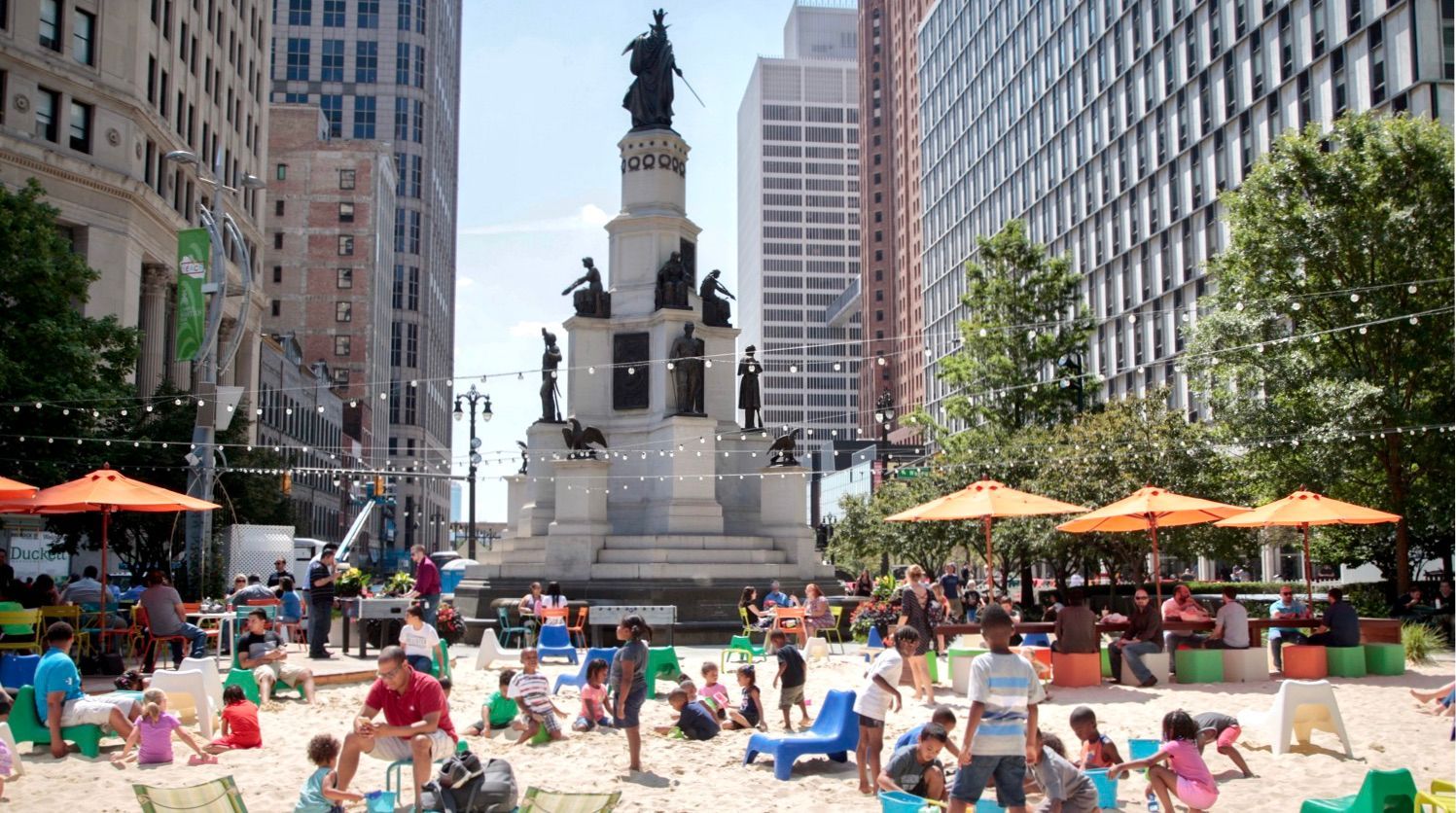
When we started our journey, we were lucky to have a core group of thinkers that provided our foundation. We called them The Golden Age of Research on Public Life:
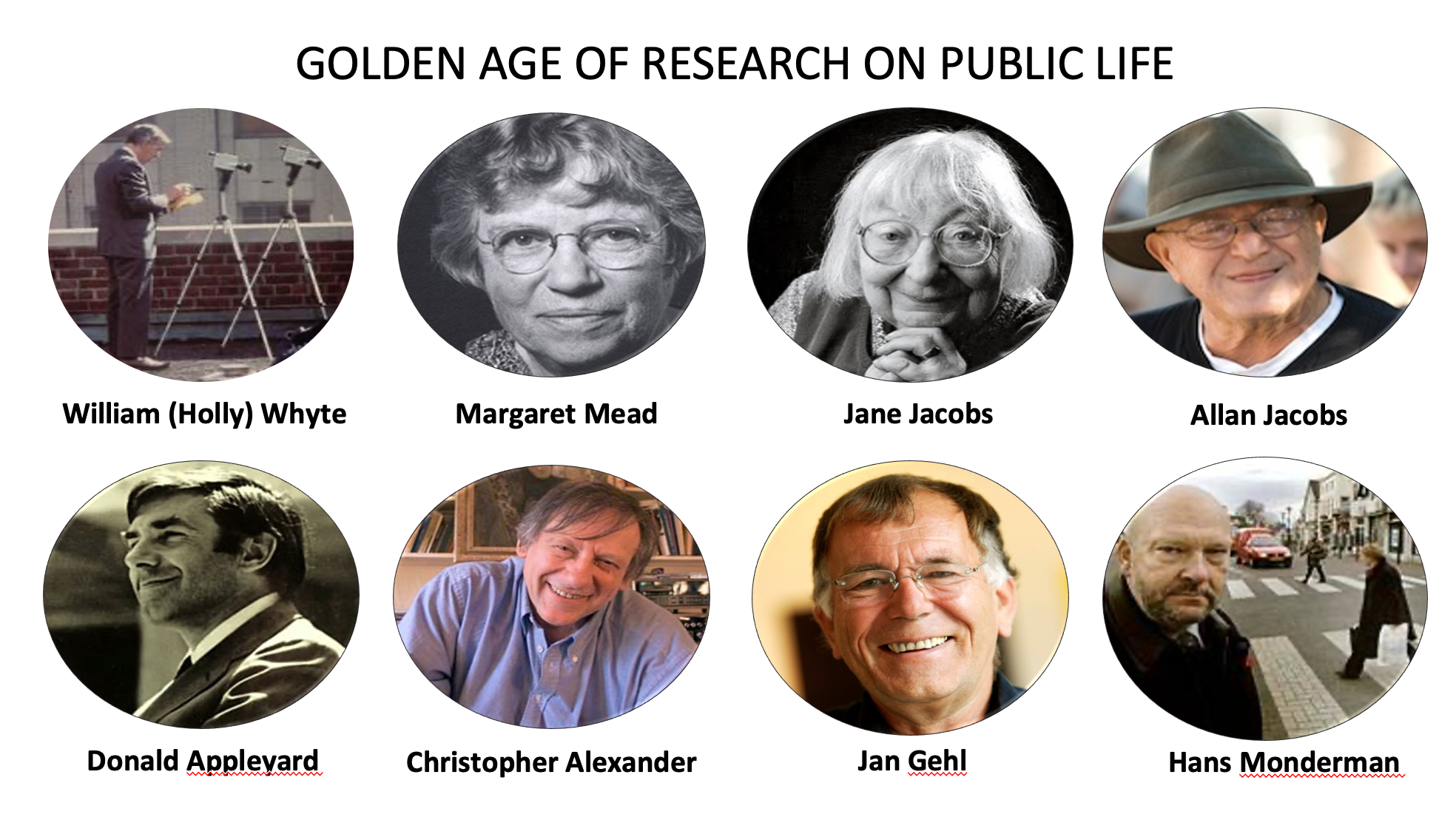
Related Articles
